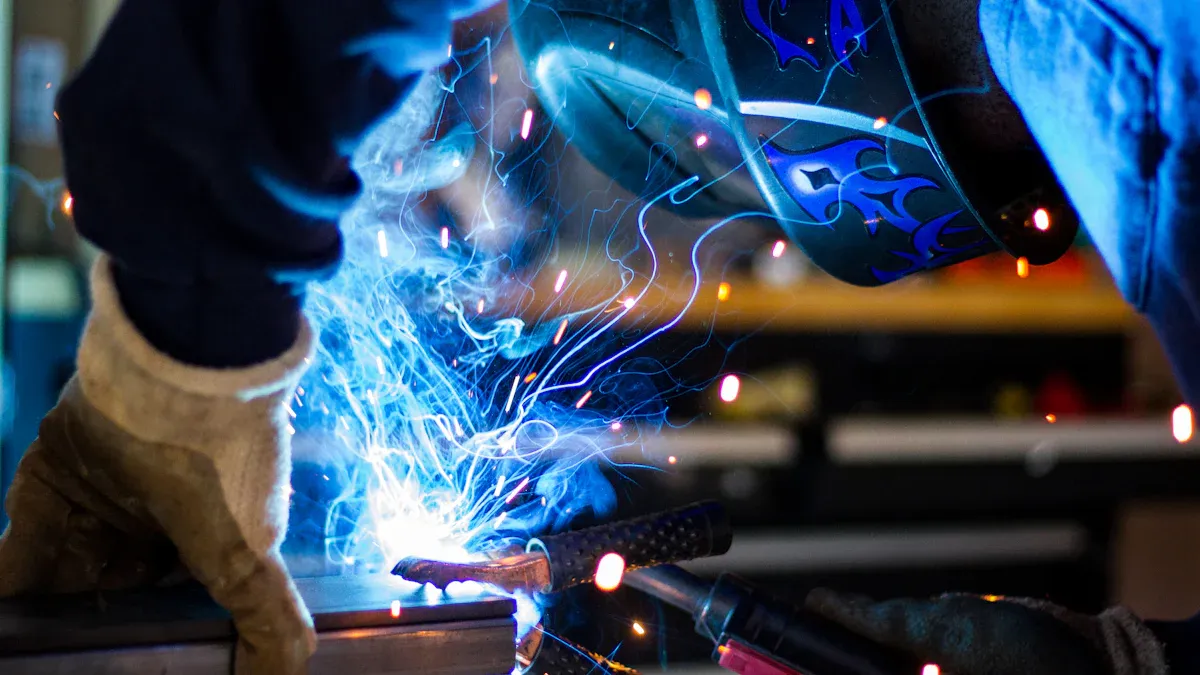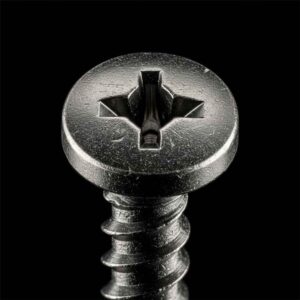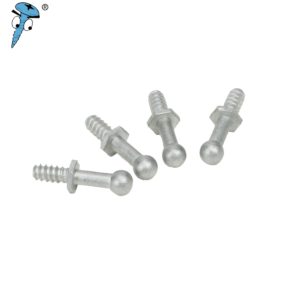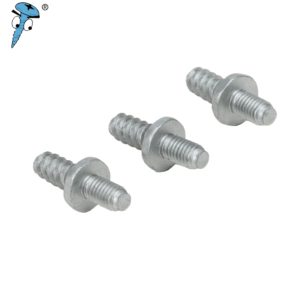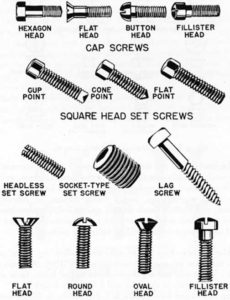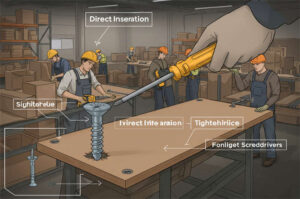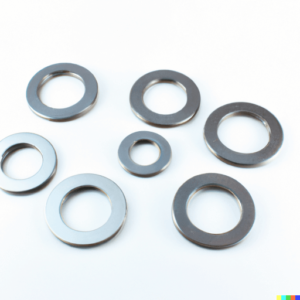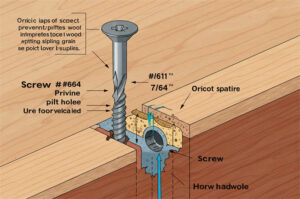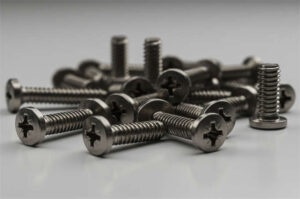When you need to join metal parts, you might think of machine screws. You can also use rivets or welds instead. Rivets are cheap, easy to use, and simple to check. Welds make a strong and lasting hold. You can also use self-tapping screws, nails, glue, or clips. The table below shows how rivets can help your projects:
| Benefit | Description |
|---|---|
| Cost Effectiveness | Rivets cost less than welding and do not need special tools, so you save money. |
| Increases Production Output | Riveting needs fewer tools and makes less waste, so you can work faster. |
| Flexibility in Design | Rivets come in many shapes and materials, so you can use them for different designs. |
| Durability | Rivets do not rust or get damaged by chemicals, so things last longer. |
| Easy Inspection and Maintenance | Rivets are easier to check and change than welded joints, so fixing things is simpler. |
Key Takeaways
- Rivets do not cost much and are simple to use. They work well for many metal projects. – Welding gives the strongest hold. It is best for heavy jobs where strength matters most. – Machine screws make it easy to put things together and take them apart. They are good for projects that need changes often. – Think about where you will use the fastener and how much weight it must hold. This helps your project last a long time. – Try other fasteners like clips and adhesives for quick repairs. They also help make your project look neat and smooth.
What Are Machine Screws?
Machine Screw Basics
You use machine screws when you need a strong and precise way to join metal parts. These fasteners work with pre-drilled and tapped holes, which means the holes already have threads cut into them. This design gives you a secure and stable connection. Unlike other screws, machine screws do not make their own holes. You insert them into existing threaded holes or use them with a nut. This method helps you create a joint that can handle more force and stress.
Tip: Machine screws give you better strength than screws that cut their own threads.
Common Uses
You will find machine screws in many industries. They are important in places where you need a reliable and tight fit. Here are some common uses:
- Machinery and Industrial Equipment: You use machine screws to hold together engines and large machines. They help these machines handle heavy loads and constant vibration.
- Electrical and Electronics: You use machine screws to secure small parts inside electronic devices. Their size and threading make them perfect for these jobs.
Machine screws are also common in tools, vehicles, and even furniture that needs a strong metal-to-metal connection.
Machine Screw Limits
Machine screws work well in many situations, but they do have limits. In high-stress or high-vibration environments, you may see problems like creep, relaxation, or even cracking around the screw. The threads can wear out if you move the parts too often. If you do not use the right type of machine screws, your equipment may wear out faster or even fail. You need to check the screws often, especially in machines that shake or move a lot.
Note: Always choose the right machine screws for your project to avoid problems with strength and wear.
Rivets for Metal Fastening
Rivet Types
You can choose from several types of rivets when you need to join metal. Each type works best for certain jobs:
- Solid rivet: You use these for permanent joins in heavy-duty metal projects like bridges and ships.
- Blind rivet: You pick these when you can only reach one side of the metal. They work well in both metal and plastic.
- Tubular rivet: These have a hollow shaft, so you can install them easily in metal ducting or light metal frames.
- Flush rivet: You use these in metal parts that need a smooth finish, such as airplane bodies.
- Drive rivet: You install these in sheet metal by hammering the head.
- Split rivet: You use these for light-duty jobs, often on thin metal or soft materials.
Tip: Blind rivets help you fasten metal when you cannot reach both sides.
How Rivets Work
You install a rivet by placing it through a hole in the metal pieces you want to join. You then deform or flatten one end of the rivet, which locks the metal parts together. Some rivets, like blind rivets, let you work from only one side. Most rivets need you to access both sides of the metal. You often use a rivet gun or a hammer for this job. The process takes more time and can be more complex than using machine screws.
| Fastening Method | Complexity | Time Required | Tools Needed | Access Required |
|---|---|---|---|---|
| Rivets | More complex | More time-consuming | Specialized tools (rivet gun, press) | Both sides |
| Machine Screws | Simpler | Quicker | Basic tools (screwdriver, drill) | One side |
Rivet Pros
Rivets give you strong and reliable metal joints. You can count on them to hold metal parts together for a long time. They work well even when the metal faces stress or harsh weather. You can use rivets in delicate metal jobs, like in airplanes, because they are easy to inspect and replace. Rivets also give you flexibility in design, since you can pick from many types and sizes.
- Rivets create solid and durable joints, making your metal projects last longer.
- They keep metal parts firmly attached, even in tough conditions.
- You can inspect and replace rivets easily, which helps with maintenance.
Rivet Cons
Rivets do have some drawbacks when you use them with metal. You will see the rivet heads, which can make the metal look less smooth. Riveted metal joints may not be as strong as welded ones, especially if you need to handle heavy loads. Rivets can add extra weight to your metal project, which matters in things like airplanes. Installing rivets takes more time and effort, and you often need to reach both sides of the metal.
- Visible rivet heads can affect the look of your metal work.
- Riveted joints may have lower strength than welded metal joints.
- Rivets add weight, which can be a problem in metal structures that need to stay light.
- Installation can be labor-intensive and may require special tools.
Welding as an Alternative
Welding Methods
There are different ways to join metal using welding. Each way works best for certain jobs and materials. The table below shows the main welding methods, where you use them, and what is good about each one:
| Welding Method | Applications | Advantages |
|---|---|---|
| MIG Welding | Automotive, Construction, Manufacturing | High speed, easy to learn, clean welds |
| TIG Welding | Aerospace, Art, Food and Beverage | High-purity welds, ideal for thin materials |
| Stick Welding | Maintenance, Shipbuilding, Agriculture | Versatile, suitable for various metals |
| Submerged Arc Welding | Shipbuilding, Pressure Vessels, Heavy Machinery | High-volume, minimal defects, deep penetration |
MIG welding is fast and makes clean joins. You use it for cars and building things. TIG welding is good for thin metals and neat work. It helps when you need a smooth finish. Stick welding is great for fixing things and farm tools. It works with many metals. Submerged arc welding is best for big jobs like ships. It makes strong joins with few mistakes.
How Welding Joins Metal
Welding sticks metal parts together by melting them. Heat and sometimes pressure make the metals join. Here is what happens in welding:
- First, tiny bumps on the metal get pressed flat. This makes small connections.
- Next, heat and pressure help metal atoms move and fill spaces. The surfaces start to blend.
- Last, atoms cross over and mix. This makes a strong and lasting join.
The metal parts become one solid piece.
Welding Pros
Welding has many good points compared to screws or rivets:
- Welded joins can be stronger than the metal itself. They hold heavy things well.
- Welds spread force over the whole join. This means fewer weak spots and longer-lasting projects.
- You can make lighter things because welded beams hold weight better than bolted ones.
Tip: Welding works with many metals like steel, titanium, copper, aluminum, and gold.
Welding Cons
Welding also has some problems you should know:
- Welded joins do not handle shaking well. If your project moves a lot, the join might break.
- The heat from welding can bend the metal. This can make the join weaker and change how it looks.
- It can be hard to find good welders. Skilled welders cost more and are not always easy to hire.
Note: Always make sure welding is right for your project before you pick it.
Other Engineered Fasteners
Nails and Clips
You can use nails and clips when you want a fast fix. Nails are good for big jobs like building houses. They cost less than many other fasteners. Nails work well when parts slide past each other. Clips help hold metal parts together quickly. You see clips in electronics, cars, and furniture. Clips help line up parts and make fixing things easy. You can use clips if you need to move or change parts often. Clips work well with panels and covers. You find clips in IT racks, electrical boxes, and car insides. Clips are great if you do not want to drill holes or use glue. Clips save time and stop damage to surfaces. Clips also help you keep wires and cables neat. Clips come in many shapes and sizes for different jobs. Clips are simple to put in and take out. You can use clips again and again. Clips do not need special tools. Clips are safer than some fasteners because they do not have sharp ends. Clips are light and do not make your project heavy. Clips are smart for joins that are not forever. Clips can hold things in place while you use other fasteners. Clips can also be spacers or guides. Clips are a flexible choice for many metal jobs. You often use clips with other fasteners to make things stronger. Clips help you not tighten too much, which can hurt thin metal. Clips are good if you want less noise and shaking. Clips can also stop scratches on surfaces. Clips cost less than many old fasteners. Clips are easy to keep and carry. Clips are important to have in any metalwork kit.
Glue and Adhesives
Glue and adhesives join metal parts without heat or drilling. You can use adhesives to seal joints and make flexible seals. This lets parts move a bit but still stay together. Some adhesives, like methacrylate, make strong joins with little prep. You must clean and get surfaces ready for the best stick. Adhesives are good when you want a smooth look or no holes. You can use glue in electronics, cars, and even planes. Adhesives save time by sealing and joining at once. You should know that different metal coatings can change how glue works.
Self-Drilling Screws
Self-drilling screws drill and tap in one step. You do not need to make holes first. These screws have a drill tip built in. You can use them on hard metals. Self-drilling screws save time and need fewer tools. They hold well in metal, but hole size matters. You often use self-drilling screws in roofs, frames, and HVAC work.
| Feature | Self-Drilling Screws | Machine Screws |
|---|---|---|
| Installation | Drill and tap in one step | Needs pre-drilled holes |
| Holding Power | Depends on hole size | More secure fit |
| Material Strength | Hardened steel, thick shank | Can be thinner |
Thread Forming Screws
Thread-forming screws make threads as you drive them in. You do not need to tap the hole first. These screws give strong and lasting joins. Thread-forming screws do not loosen from shaking. You can use them in aluminum and other hard metals. They do not make chips, so your work stays clean. Thread-forming screws help you avoid cross-threading and stripping. You often use thread-forming screws in electronics, cars, and appliances.
| Advantage | Description |
|---|---|
| Strength and Holding Power | Lasting thread connections, strong grip |
| Vibration Resistance | Prevents loosening over time |
| Clean Installation | No chips or swarf |
| Suitable for Hard Materials | Works well in aluminum and similar metals |
Self-Tapping Screws
Self-tapping screws cut their own threads as you drive them in. You can use self-tapping screws in metal, wood, and plastic. These screws are good for sheet metal, electric boxes, and repairs. You do not need nuts or pre-tapped holes. Self-tapping screws make putting things together fast and easy. You find self-tapping screws in roofs, furniture, and cars. Self-tapping screws are handy for many jobs.
Tip: You can use self-tapping screws for quick fixes and permanent joins in thin metal.
| Fastener Type | Description | Applications |
|---|---|---|
| Self-Clinching Fasteners | Become part of the sheet metal, strong attachment | Electronics, automotive, aerospace |
| Weld Fasteners | Welded to metal, keep sheet strength | Automotive frames, industrial machines |
| Bolts and Nuts | High clamping force, removable | Sheet metal, machinery |
| Threaded Inserts | Durable threads in thin materials | Automotive, aerospace, enclosures |
| Cage Nuts and Clip-On Nuts | Easy assembly, allow for misalignment | IT racks, cabinets, automotive |
Comparing Fastening Methods
Application Scenarios
You face many choices when you select fasteners for your project. Each type of fastener fits a different job. You need to think about what you want the fasteners to do. Some fasteners work best for heavy loads, while others suit quick fixes or temporary joins. You should look at the load requirements, the materials you want to join, and the environment where you will use the fasteners.
- Machine screws give you strong, removable joins. You use these fasteners in machines, electronics, and tools. You pick machine screws when you want to take things apart later.
- Rivets help you make permanent joins. You use these fasteners in airplanes, bridges, and metal frames. Rivets work well when you need a joint that will not come loose.
- Welds create a solid, lasting bond. You use welding fasteners for frames, vehicles, and heavy equipment. Welds suit jobs where you want the metal to act as one piece.
- Nails and clips help you with fast assembly. You use these fasteners in furniture, cars, and panels. Clips let you remove and replace parts quickly.
- Glue and adhesives join metal without heat or drilling. You use these fasteners in electronics, cars, and places where you want a smooth look.
- Self-drilling, thread forming, and self-tapping screws let you join metal fast. You use these fasteners in roofs, HVAC, and repairs. These fasteners save time and do not need pre-drilled holes.
When you compare fasteners, you need to check the load, the materials, and the environment. You want fasteners that match your needs for strength, durability, and ease of use.
Strength and Durability
You want fasteners that hold up under stress. The strength and durability of fasteners depend on the type you choose and how you use them. You need to match the fasteners to the job so your project lasts.
- Welded joints give you the most strength. These fasteners can reach up to 100% of the base metal’s strength. You use welding fasteners when you need the joint to be as strong as the metal itself. Welds can fail suddenly if the project shakes or moves a lot.
- Riveted joints give you 60-80% of the metal’s strength. These fasteners fail slowly, so you can spot problems before they get worse. Rivets work well in places with vibration or movement.
- Machine screws give you a strong hold, but the threads can wear out if you remove the fasteners often. You use these fasteners when you want to take things apart and put them back together.
- Self-tapping, thread forming, and self-drilling screws give you good strength for thin metal. These fasteners resist loosening from shaking. You use these fasteners in repairs and quick builds.
- Glue and adhesives give you a flexible hold. These fasteners work best when you want a smooth finish and do not need to take things apart. Adhesives may not hold up under heavy loads or high heat.
- Nails and clips give you fast, light-duty joins. These fasteners work best for panels, covers, and places where you do not need much strength.
You should always check the size and strength of your fasteners. Make sure the fasteners can handle the load and fit the materials you use.
Installation and Removal
You want fasteners that are easy to install and remove. The right fasteners save you time and effort. Some fasteners need special tools, while others go in with simple hand tools.
| Fastener Type | Installation Ease | Removal Ease | Tools Needed |
|---|---|---|---|
| Machine Screws | Easy | Easy | Screwdriver, wrench |
| Rivets | Moderate | Hard | Rivet gun, hammer |
| Welds | Hard | Very hard | Welder, grinder |
| Nails and Clips | Very easy | Easy | Hammer, pliers |
| Glue/Adhesives | Easy | Hard | Applicator, solvent |
| Self-Drilling Screws | Easy | Easy | Drill, screwdriver |
| Thread Forming Screws | Easy | Easy | Screwdriver, drill |
| Self-Tapping Screws | Easy | Easy | Screwdriver, drill |
- Machine screws let you take things apart and put them back together. You use these fasteners when you want to fix or change parts.
- Rivets make a permanent join. You need to drill out the fasteners to remove them. You use rivets when you do not plan to take things apart.
- Welds give you a solid join, but you need to cut or grind the fasteners to remove them. You use welding fasteners for jobs that never need to come apart.
- Nails and clips go in fast and come out with simple tools. You use these fasteners for quick jobs and temporary joins.
- Glue and adhesives are easy to use, but hard to remove. You may need heat or chemicals to take these fasteners apart.
- Self-drilling, thread forming, and self-tapping screws go in fast and come out just as easily. You use these fasteners for repairs and quick builds.
Tip: Choose fasteners that match your need for easy installation and removal. This saves you time and helps with repairs.
Cost and Accessibility
You want fasteners that fit your budget and are easy to find. The cost of fasteners depends on the type, the tools you need, and the skill required.
Welding fasteners cost more at first. You need special equipment, skilled workers, and extra materials. Welding fasteners work best for big jobs where you need strong, lasting joins. Rivets cost less to buy and use. You do not need as many tools or as much training. Riveting fasteners help you save money on large projects. Machine screws cost more than rivets, but less than welding. You can find these fasteners in most hardware stores. You use machine screws when you want a balance of cost and strength.
Nails and clips cost the least. You can buy these fasteners in bulk and use them for many jobs. Glue and adhesives cost more than nails, but less than welding. You use these fasteners when you want a smooth look or need to seal joints. Self-drilling, thread forming, and self-tapping screws cost more than nails, but less than welding. You can find these fasteners in most stores, and you do not need special tools.
Note: The best fasteners for your project depend on your budget, the tools you have, and how easy it is to get the fasteners you need.
When you compare fasteners, you should look at:
- The load the fasteners must support
- The materials you want to join
- The environment where you will use the fasteners
- The size and strength of the fasteners
- The cost and how easy it is to get the fasteners
You make the best choice when you match the fasteners to your project needs.
Choosing the Right Fastener
When to Use Machine Screws
Use machine screws if you want a strong join you can take apart. They work well for things like machines and electronics. You can use them in DIY, building, and car repairs. Machine screws are simple to put in and take out with basic tools. You can pick different materials, like stainless steel, to stop rust. Machine screws are best if you need to change or move parts later.
| Project Type | Common Fasteners |
|---|---|
| DIY projects | Cost-effective screws |
| Automotive | Stainless steel screws |
| Sheet metal work | Self-tapping screws |
Tip: Choose machine screws if you want to fix or swap parts later.
When to Use Rivets
Pick rivets if you need a join that will not come apart. Rivets are good for heavy loads and shaking. You see them in metal frames, bridges, and planes. You can put in rivets from one side if you cannot reach both. Rivets handle shock and do not need much care after you put them in. Rivets are safe for things that cannot take heat because they do not use heat.
| Advantage | Description |
|---|---|
| Withstand heavy loads and shock | Rivets are made to hold a lot of weight and hits. |
| Resist vibration and dynamic stresses | They stay strong when things shake or move. |
| Suitable for inaccessible joints | You can put in rivets from just one side. |
| Require little to no maintenance | Rivets do not need much care after you use them. |
| Ideal for heat-sensitive materials | Rivets do not hurt parts that cannot take heat. |
Note: Rivets are a good pick for metal jobs that need to last.
When to Use Welds
Use welds if you want the strongest and longest-lasting join. Welding is best for big jobs like buildings and factories. Welds look smooth and keep water out. Pick welding if you need the join to last and stay strong. Welds are hard to take apart, so use them for parts that stay together.
- Welding is best for strong and lasting joins.
- It works well when you need the join to handle stress.
- Welding gives a smooth look and keeps water out.
Tip: Use welding for frames, cars, and big machines that need to stay together.
When to Use Other Fasteners
Use nails, clips, glue, or self-tapping screws for quick or light jobs. Nails and clips are fast to put in and take out. Glue is good if you want a smooth look or need to seal a join. Self-tapping screws are great for sheet metal and repairs because they make their own threads. Use these fasteners for panels, covers, or places that do not need much strength.
- Fasteners for boats should not rust, so use bronze.
- Outside jobs need fasteners that can handle rain, like stainless steel.
- Hot jobs need fasteners that can take heat.
Note: Always pick fasteners that fit your job for strength, easy removal, and how hard they are to put in.
You can join metal parts in many ways. Each fastener is best for a certain job. The table shows how they are different:
| Fastener Type | Connection Type | Best Use |
|---|---|---|
| Machine Screws | Removable | General assembly, machinery |
| Rivets | Permanent | Aerospace, auto body, sealing |
| Welds | Permanent | Heavy-duty, structural work |
| Specialty Fasteners | Varies | Tight spaces, vibration, special |
When you pick a fastener, think about these things:
- How strong the joint needs to be.
- If you want to take the fastener out later.
- What materials you are joining and if they work with the fastener.
- If the place is hot or wet, which can cause rust.
Choose the fastener that gives you the right strength, is easy to put in, and can be removed if needed.
FAQ
What is the strongest way to join metal parts?
Welding gives you the strongest bond. Welds make the metal act as one piece. You should use welding for heavy-duty projects that need lasting strength.
Can you remove rivets or welds easily?
You cannot remove rivets or welds easily. You must drill out rivets or cut welds. Choose screws or clips if you want to take things apart later.
When should you use glue or adhesives on metal?
Use glue or adhesives when you want a smooth look or need to seal joints. Adhesives work well for light loads and when you do not want holes.
Are self-tapping screws good for repairs?
Yes, self-tapping screws work well for repairs. You do not need pre-drilled holes. You can use them for quick fixes in sheet metal, boxes, or panels.
How do you pick the right fastener for outdoor use?
Pick stainless steel or coated fasteners for outdoor jobs. These resist rust and last longer in rain or sun.


